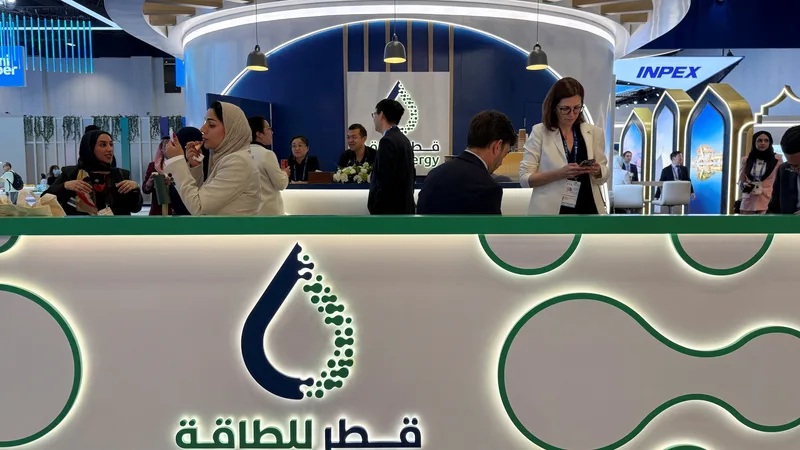Qatar-Energy Expands in Egypt Signaling Renewed Gulf Confidence
Qatar-Energy’s 27 % stake in Egypt’s offshore Block 3 marks a strategic Gulf return to North Africa’s energy scene. With Egypt’s FX reserves near USD 36 bn and inflation ≈ 33 %, the deal brings capital, credibility, and stability to Cairo’s upstream revival.

Qatar-Energy’s acquisition of a 27 percent stake in Egypt’s North East El Amriya offshore block from Shell marks more than a portfolio shuffle—it signals a calibrated Gulf re-entry into North Africa’s upstream market at a moment when global capital for hydrocarbons is both scarce and strategic. The transaction, announced in early October 2025, reflects Egypt’s ability to attract hard-currency investment despite macro headwinds and aligns with Doha’s strategy of deepening liquefied-natural-gas and condensate exposure along the Eastern Mediterranean corridor.
While financial terms remain undisclosed, analysts estimate comparable offshore deals in the region have priced between USD 1.8 and 2.2 per barrel of recoverable reserves—implying a valuation near USD 200 million. Shell is expected to retain operatorship with a majority interest, ensuring continuity in exploration management while diversifying project risk. The block sits within the Mediterranean’s prolific hydrocarbon belt, adjacent to Eni’s Zohr field and Total-Energies’ North El Hammad concession, both key components of Egypt’s export-oriented gas strategy.
The move strengthens Egypt’s upstream revival. After a slowdown in 2022–2023, foreign investment in oil and gas projects reached roughly USD 8.2 billion through mid-2025, according to the Ministry of Petroleum. The country’s target of 5.5 billion cubic feet per day of gas output remains ambitious but attainable given renewed Gulf and Western participation. Foreign-currency inflows from energy investment also provide a modest but visible anchor for the Egyptian pound (USD/EGP ≈ 49.6) amid persistent inflation of around 33 percent and foreign-exchange reserves estimated near USD 36 billion as of September 2025.
The deal’s macro significance lies in timing as much as in volume. Egypt’s payment arrears to international oil companies—about USD 2.3 billion, according to IMF data—have constrained new exploration rounds. Securing a sovereign-backed investor like Qatar-Energy reassures lenders that the government can meet long-term contractual commitments. That confidence effect extends beyond hydrocarbons; it strengthens Egypt’s broader financing credibility across sovereign bonds (EGYP2032 ≈ 9.9 percent yield) and infrastructure partnerships under the NWFE climate-finance platform.
Regionally, the acquisition underscores a pattern: Gulf capital increasingly anchors North Africa’s upstream investment pipeline. Similar transactions include ADNOC’s stake in Algeria’s Berkine Basin and Saudi Aramco’s exploration partnership in Mauritania. Benchmarking valuations shows Egypt’s implied resource pricing now trailing Algeria’s USD 2.5 per boe and Nigeria’s 2.9 per boe, suggesting room for repricing as production visibility improves. For Qatar-Energy, the Egyptian asset complements its stakes in Namibia’s Orange Basin and Cyprus’s Block 10, consolidating its footprint in high-potential frontier basins while aligning with its liquefied-gas export expansion strategy.
Market reaction has been measured but positive. Energy equities within the MSCI Emerging Markets Energy Index (NYSEARCA: EME) posted mild gains, reflecting renewed investor appetite for Gulf-anchored energy assets. Brent (ICE: LCOc1) hovered near USD 85 per barrel, while natural-gas futures (NYMEX: NG=F) stabilized around USD 2.65 per MMBtu, indicating stable pricing conditions for near-term development planning. Egypt’s sovereign credit default swaps tightened marginally by 12 basis points following the announcement—a small but symbolic indicator of market confidence in new capital inflows.
Still, execution risk remains. Egypt’s energy sector continues to navigate FX shortages, subsidy reforms, and shifting global investment sentiment amid the energy-transition narrative. For QatarEnergy, assuming operational exposure within Egypt’s regulatory framework means balancing long-term strategic positioning with potential delays in project monetization. As global financing costs remain elevated—U.S. 10-year yields (US10Y: ^TNX) near 4.35 percent and euro-zone corporates average 3.6 percent—each offshore venture carries rising capital intensity.
The transaction also reinforces Egypt’s strategic positioning in Mediterranean energy diplomacy. By deepening ties with Qatar—a key LNG supplier and sovereign investor—Cairo diversifies its geopolitical partnerships beyond traditional Western alliances, complementing collaborations with Eni (ENI.MI) and Chevron (NYSE: CVX). For Qatar, Egypt offers a politically stable, infrastructure-ready hub for LNG transit toward European markets facing persistent gas-security concerns.
Beyond the immediate transaction, the deal’s deeper narrative is about adaptation. Egypt is recalibrating its energy model from state-driven exploration toward co-financed, risk-shared partnerships that blend sovereign credibility with private efficiency. Qatar -Energy’s entry delivers both balance-sheet strength and symbolic validation that Egypt’s hydrocarbons remain investable despite macro stress.
In an era when most global majors are trimming exploration budgets, the commitment of a Gulf sovereign to a North African offshore block sends a quiet but potent signal: strategic hydrocarbons remain central to frontier-market diplomacy. Whether the investment delivers commercial success will depend on geology and execution. But as a financial statement, the QatarEnergy–Shell deal already achieves what Egypt needs most—confidence denominated not in rhetoric, but in capital.





